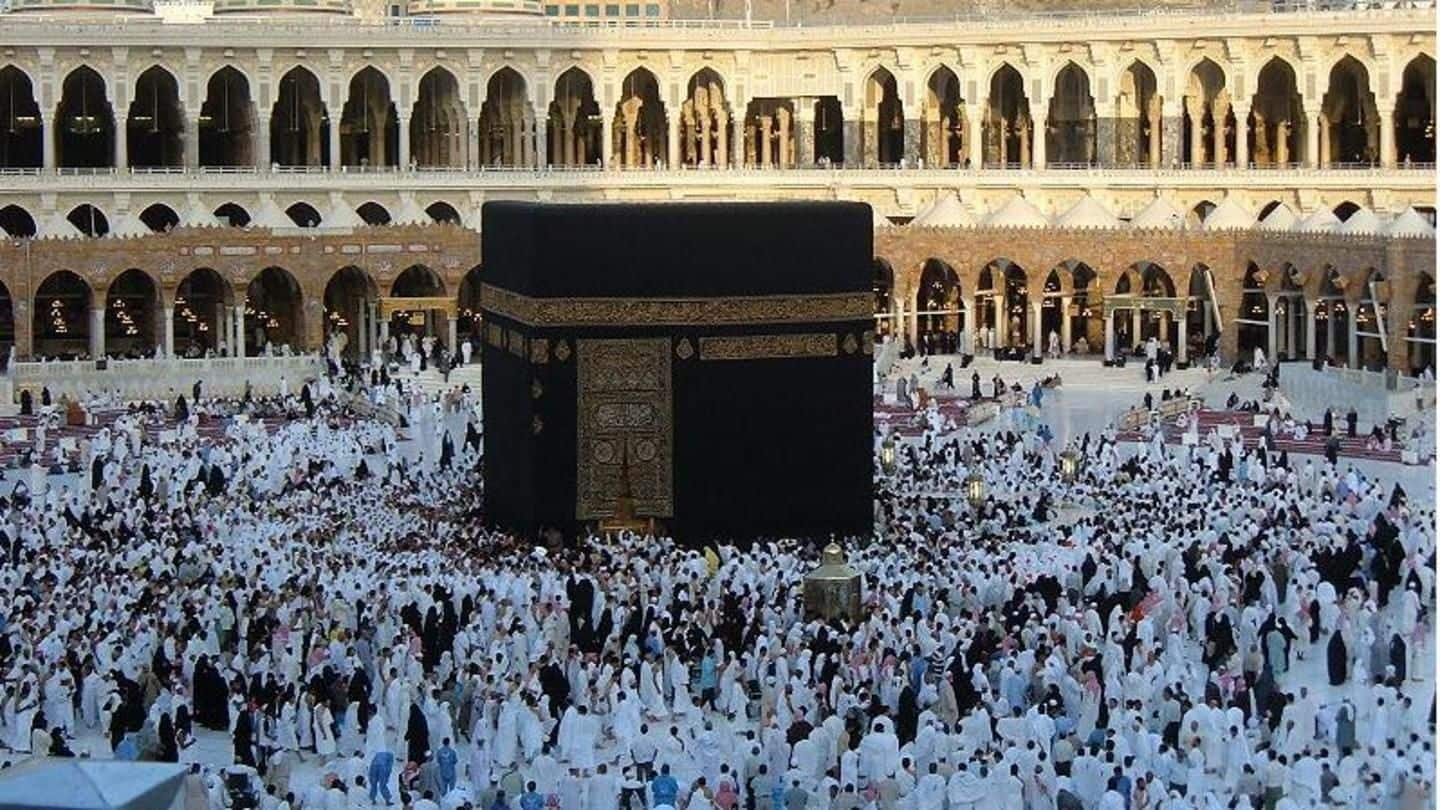
Here's all you need to know about the Hajj pilgrimage
What's the story
More than 2 million Muslims from around the world, including India, yesterday began the annual Hajj pilgrimage at first light in Saudi Arabia, circling the cube-shaped Kaaba in Mecca that Islam's faithful face five times each day during their prayers. The five-day Hajj pilgrimage represents one of the world's biggest gatherings every year and is required of all able-bodied Muslims once in their life.
Prayers
Pilgrims pray for Muslims in war-torn parts of the world
The Hajj offers pilgrims an opportunity to feel closer to God amid the Muslim world's many challenges, including the threat of violence in the Middle-east and the plight of Myanmar's Muslim Rohingyas. "We're very blessed by Allah to be here, and we pray to make the Islamic nations from the West to the East a peaceful place," said Essam-Eddin Afifi, a pilgrim from Egypt.
Hajj
What is the significance of the Hajj?
Muslims believe the Hajj retraces the footsteps of the Prophet Muhammad, as well as those of the prophets, Abraham and Ishmael, in the Bible. Muslims believe God stayed the hand of Abraham after commanding him to sacrifice his son, Ishmael. In the Christian and Jewish version of the story, Abraham is ordered to kill his other son, Isaac.
Information
What is the Kaaba?
The Kaaba represents the metaphorical house of God. Muslims circle the Kaaba counter-clockwise seven times while reciting supplications to God, then walk between the two hills traveled by Hagar, Abraham's wife. Mecca's Grand Mosque, the world's largest, encompasses the Kaaba and the two hills.
Medina
Prophet Muhammad built his first mosque in Medina
Before heading to Mecca, many pilgrims visit the Medina city, where the Prophet Muhammad is buried and where he built his first mosque. After Mecca, pilgrims will head to Mt. Arafat, where the Prophet Muhammad delivered his final sermon. Pilgrims will then head to Muzdalifa area, picking up pebbles along the way for a symbolic stoning of the devil in the Mina valley.
Eid al-Adha
Men shave their heads to mark the end of Hajj
At the Hajj's end, male pilgrims will shave their hair and women will cut a lock of hair in a sign of renewal for completing the pilgrimage. Around the world, Muslims will mark the end of Hajj with a celebration called Eid al-Adha. The holiday, remembering Abraham's willingness to sacrifice his son, sees Muslims slaughter sheep and cattle, distributing the meat to the poor.
Custodians
Saudi family takes care of the holiest places in Islam
Saudi Arabia's ruling Al Saud family takes care of the management of the holiest sites in Islam. King Salman's official title is the "Custodian of the Two Holy Mosques" at Mecca and Medina. Other Saudi kings before them have adopted the title. The Kingdom has spent billions of dollars on safety measures, particularly in Mina, where some of the Hajj's deadliest incidents have occurred.
Information
A stampede in Mina killed around 2,400 people in 2015
The worst incident in Mina took place on September 24, 2015, when a stampede and crush of pilgrims in Mina killed at least 2,426 people, according to an Associated Press count.